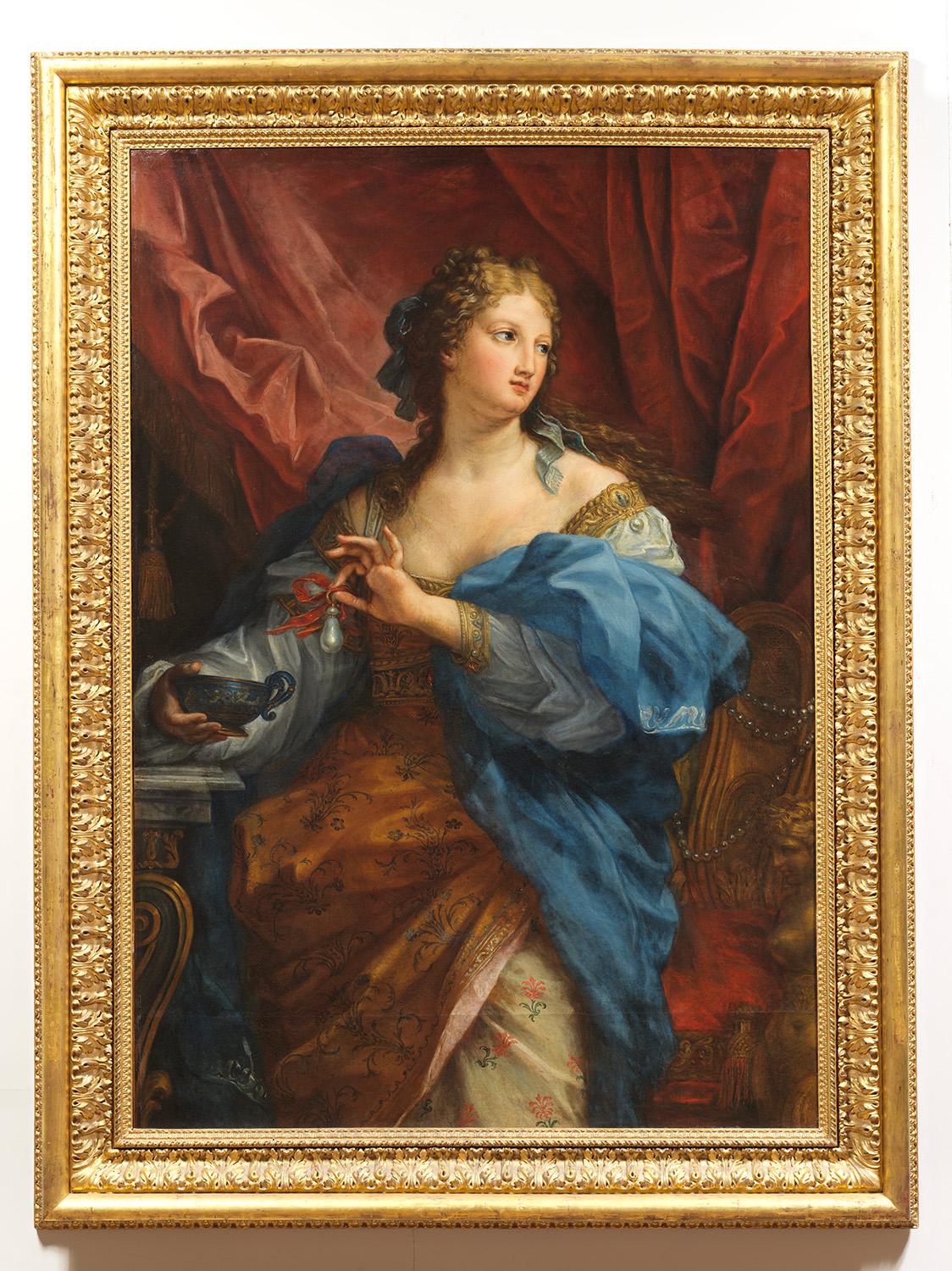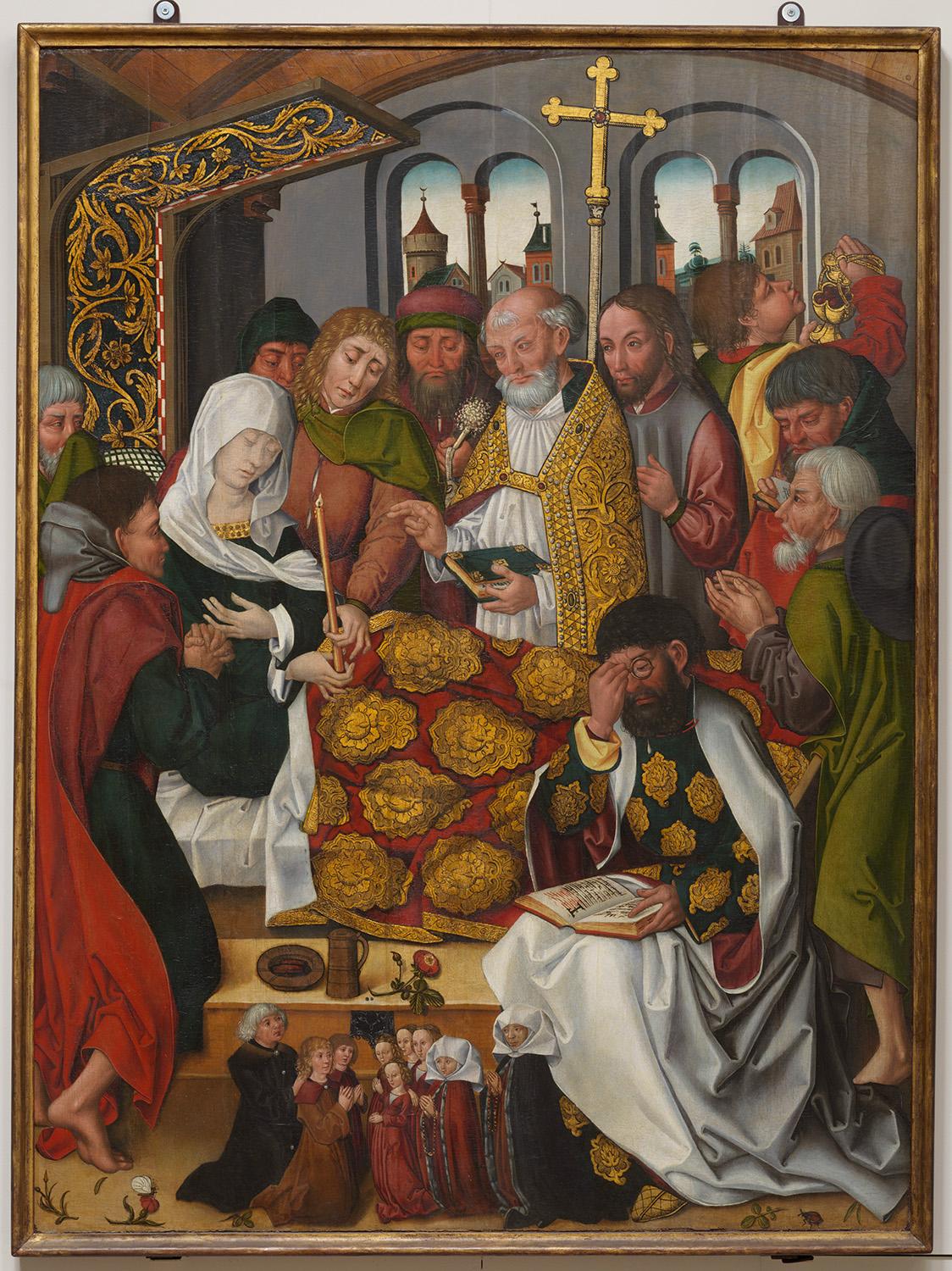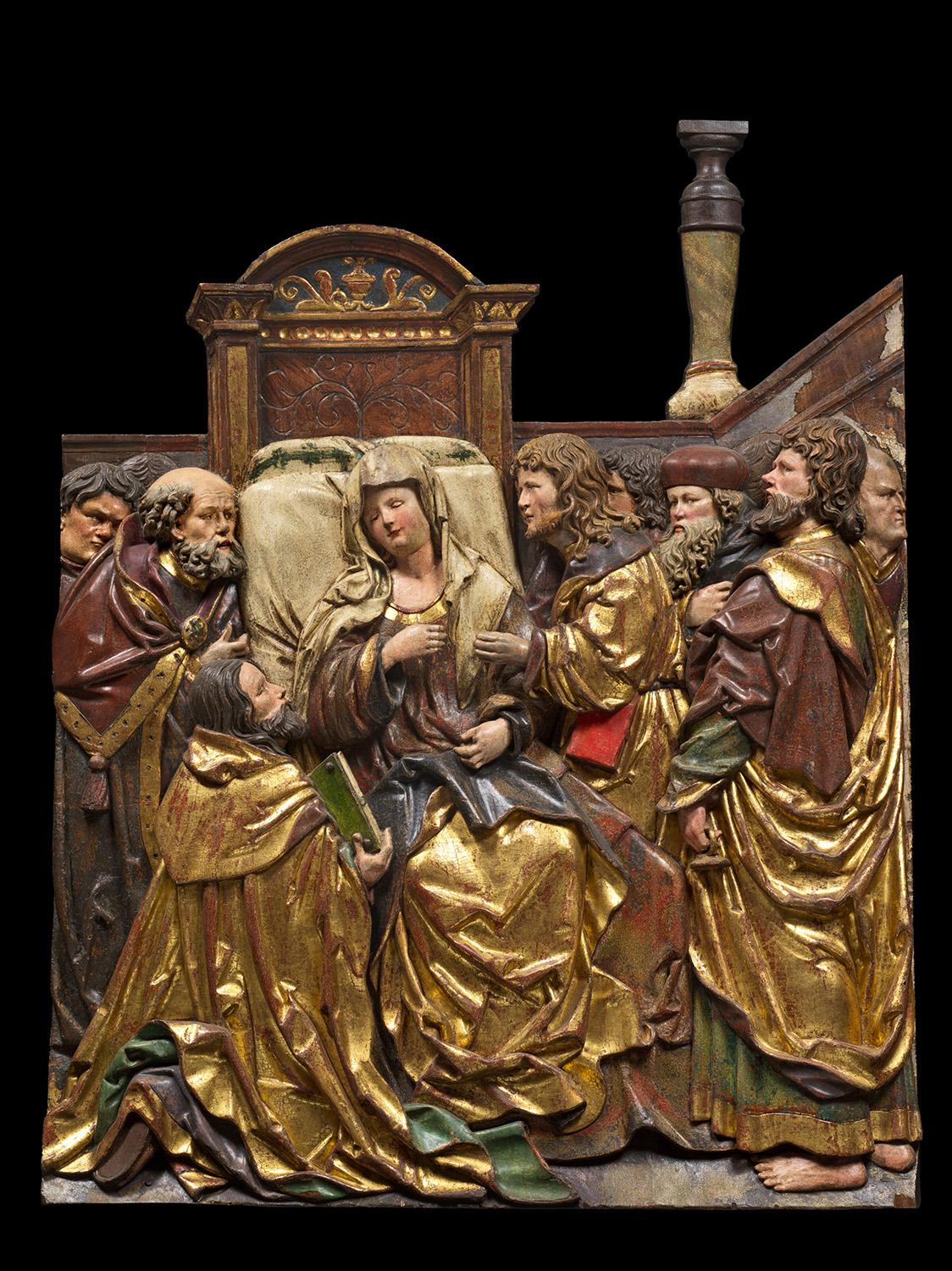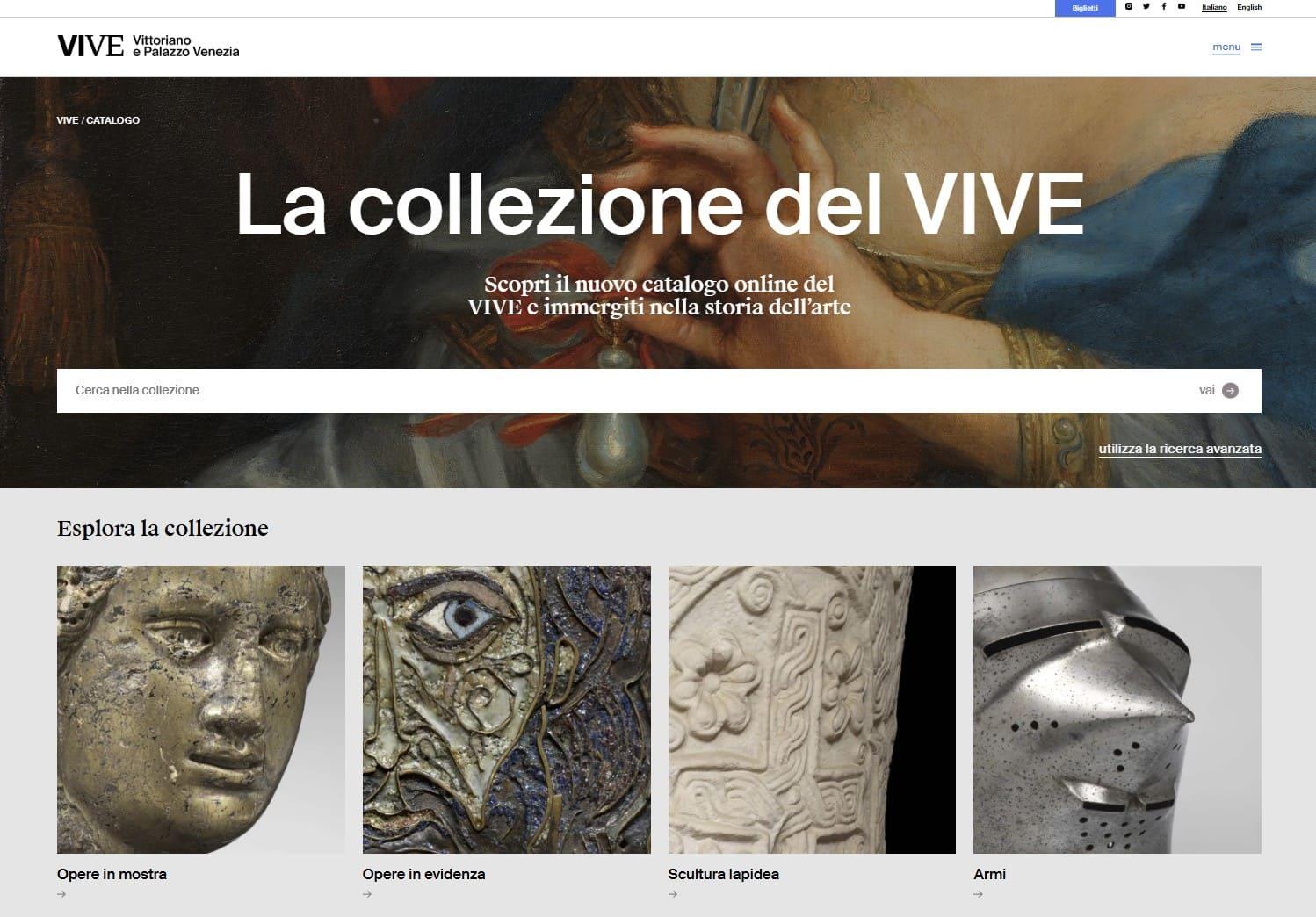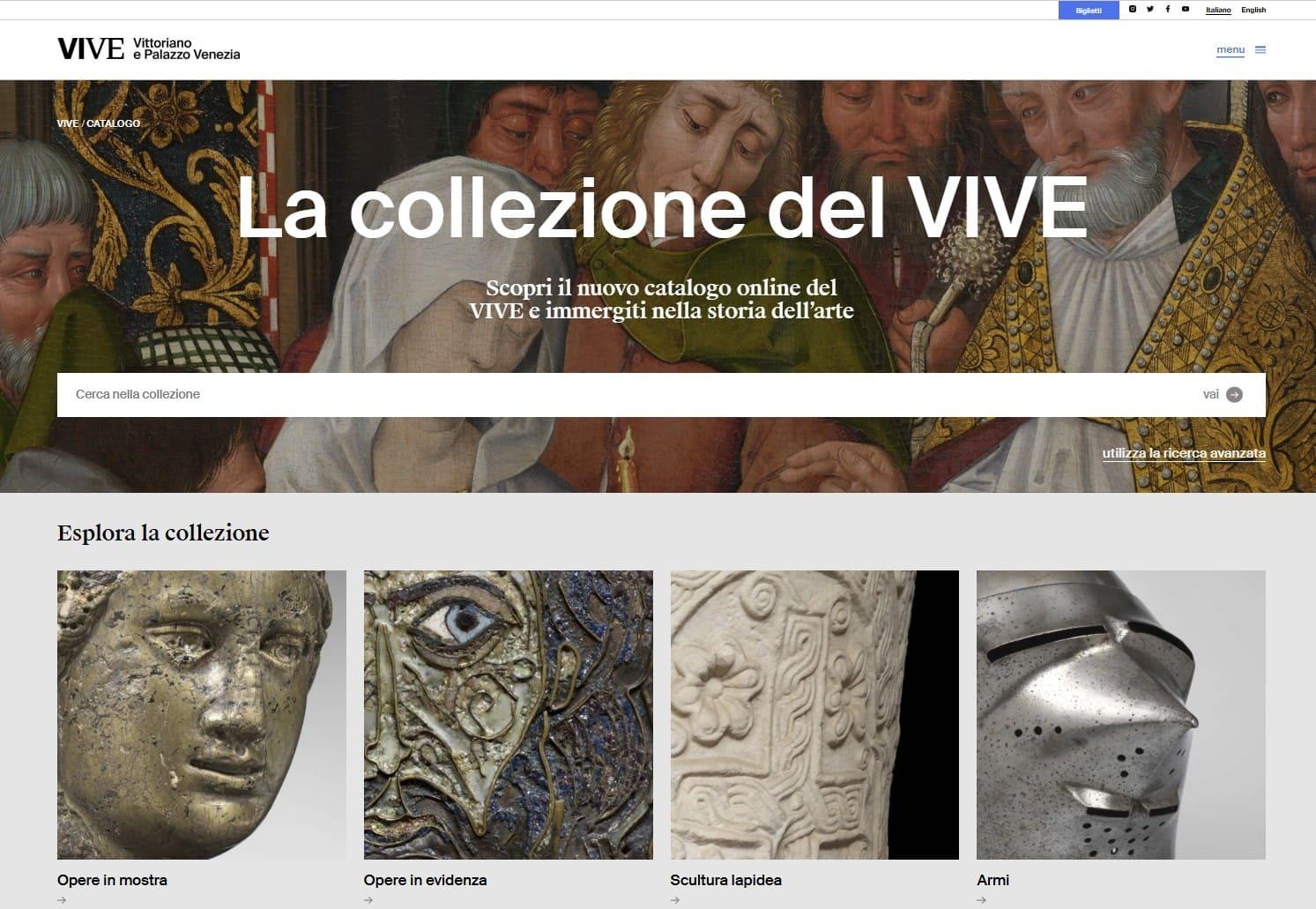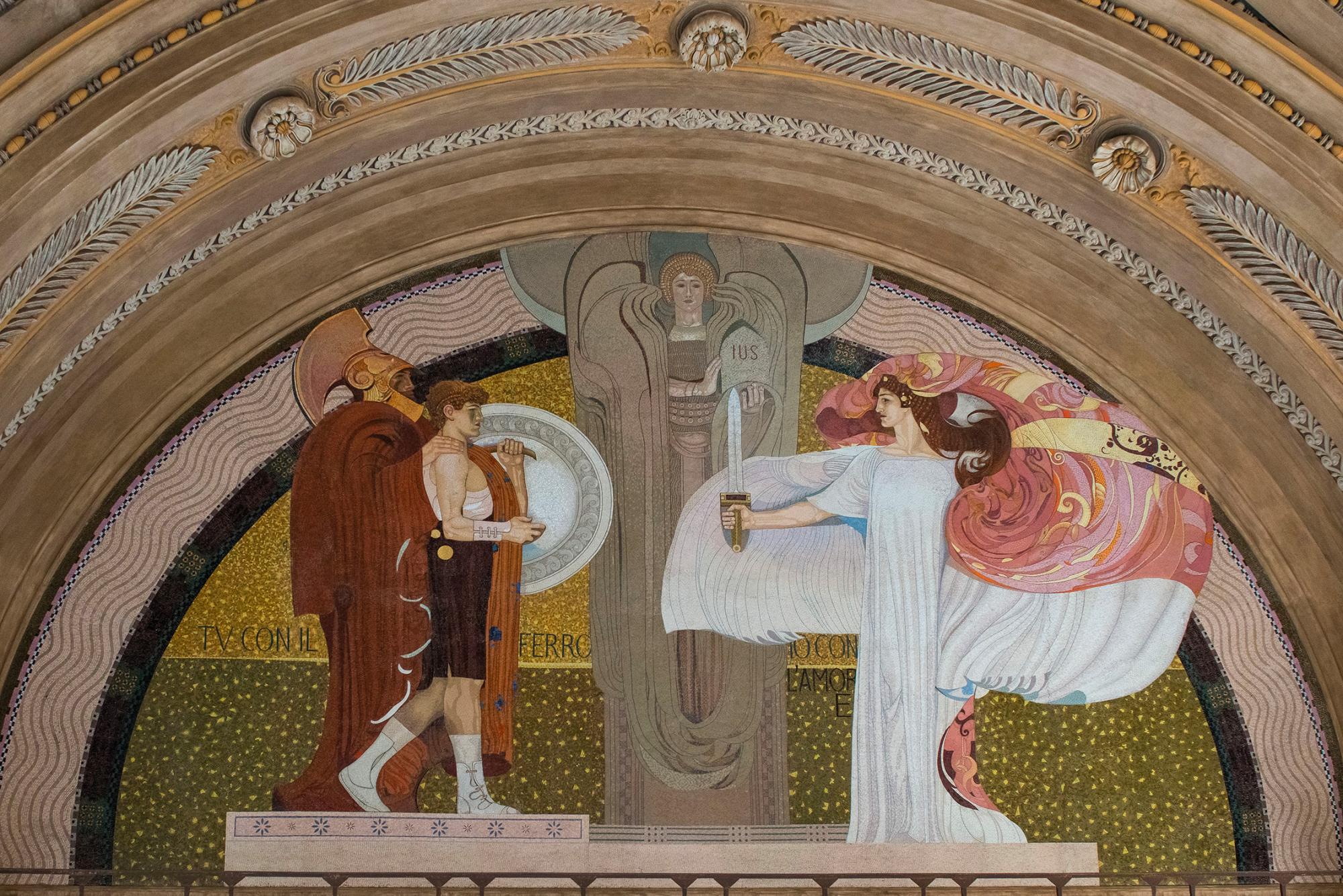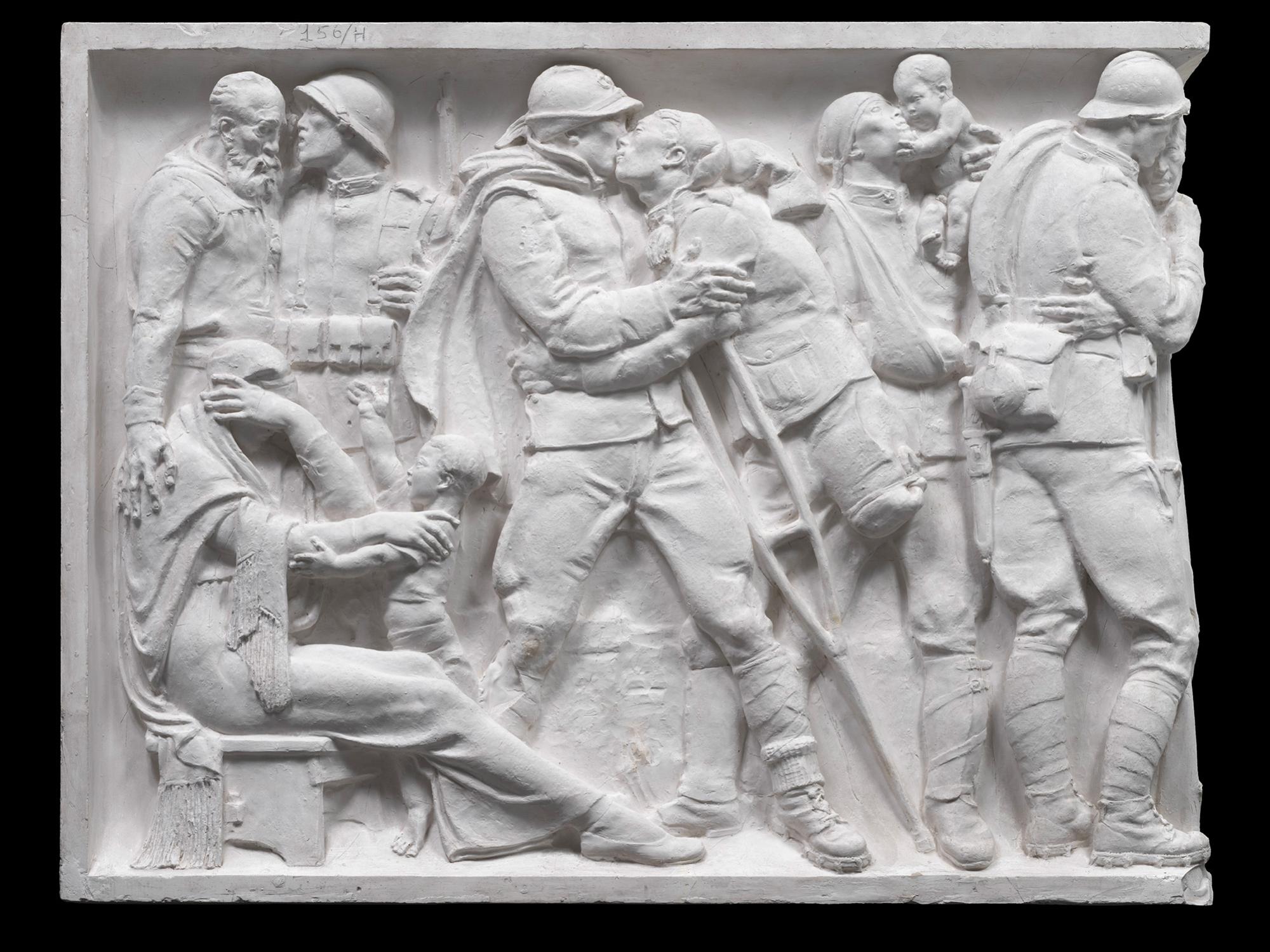Rome, 13 February 2025 - To discover and critically re-evaluate the collections of the VIVE - Vittoriano and Palazzo Venezia, including the works housed in the storerooms, in order to contribute to the broader activity of conservation and valorisation: from the design of new displays to the planning of temporary exhibitions. This is the aim of the impressive work of systematic cataloguing promoted by the VIVE, directed by Edith Gabrielli, which has led to the creation of an online catalogue on the Institute's website (vive.cultura.gov.it).
An essential tool for an appropriate protection and valorisation activity, the cataloguing project, conceived and directed by Edith Gabrielli, was entrusted by the VIVE to three working groups, engaged in a systematic and continuous study of the collections, coordinated by three renowned academics: Alessandro Tomei, former Full Professor of Medieval Art History at the "Gabriele d'Annunzio" University of Chieti-Pescara, Barbara Agosti, Full Professor of Modern Art History at the University of Tor Vergata, and Valerio Terraroli, Full Professor of Contemporary Art History at the University of Verona, respectively for medieval, modern and contemporary art, in line with the heritage held by the Institute.
Launched in 2020, the work of cataloguing included, in an initial phase, the reconnaissance of the various and often dissimilar catalogues already carried out in the past and the elaboration of a four-year work programme that would include, on the one hand, the updating of the existing records and, on the other hand, the creation ex novo of the missing ones. This was followed by the definition of the characteristics of the online catalogue to be published on the VIVE website - from the card model of the individual works to the search and filter functions - reconciling the solutions proposed by the main national and international institutions with the specificities of the Institute's heritage.
The catalogue - now online with the first 94 works catalogued for the Middle Ages - features no less than 560 entries in Italian and English compiled by some 80 specialists, most of them young, from major Italian and foreign research centres and universities.
A multidisciplinary and highly specialised work that, also thanks to the support of Silvia Armando and the Institute's internal staff, has made it possible to thoroughly investigate the collections, giving a more complete and accurate reading of them, as well as dozens of discoveries and new dates and attributions.
The flagship of the initiative is the high quality of the photographic documentation; over 2,200 photographs are included in the catalogue, the result of a careful reorganisation of the existing photographic material - in particular the digital ones - and the activation of a new ad hoc photographic campaign.
“The major cataloguing project promoted by the VIVE is designed to promote the study and knowledge of the Institute's collections and to ensure their enjoyment by a broad and diverse public. In line with the most important international museum realities and firmly convinced of the indispensable role of cataloguing for an optimal protection and valorisation of our heritage, we have launched an impressive intervention in this direction, assisted by three renowned academics who have coordinated specialists from the major Italian and foreign research centres and universities. The publication of the online catalogue will enable scholars to carry out scientific research, deepening the study of the works of interest and discovering new attributions and dates, and for tourists and the curious to get to know the most significant works also through the important photographic kit that accompanies the catalogue. This significant commitment to the public and the scientific community has led to a critical re-evaluation of the VIVE's collections, encouraging their rediscovery through new visitor routes," says Edith Gabrielli, Director of the VIVE-Vittoriano and Palazzo Venezia.
In order to share with the public the results of the investigations conducted as part of the cataloguing campaign and to allow visitors to discover and admire the works currently housed in the deposits, the VIVE-Vittoriano and Palazzo Venezia are promoting a cycle of five meetings entitled "Reintegrations. From the Depots to the Visiting Route". Curated by Director Edith Gabrielli, the cycle aims to reintegrate these works into the museum itinerary open to the public, involving the latter in an experience of rediscovery and historical-artistic investigation of the VIVE's heritage.
On the occasion of each meeting, an exhibition of the work that is the subject of the conference itself will be inaugurated in the Sala Altoviti of Palazzo Venezia. The initiative, made possible thanks to the work of the Institute's art historians, Veronica Dell'Agostino and Alessia Dessì, enables direct knowledge of the work also through consultation of the online catalogue via a special QR code.
Organised to coincide with the publication of the various blocks of cards in the online catalogue, the first conference - scheduled for today, 13 February, at 6 p.m. in the Sala del Refettorio of Palazzo Venezia - is dedicated to medieval art.
The meeting, entitled "From Constantinople to Rome: the bronze door of St. Paolo Outside the Walls and the fragment in the Palazzo Venezia Museum" and held by Professor Alessandro Tomei, focuses on the fragment of the Byzantine door of the Basilica of St. Paolo Outside the Walls, depicting a Pentecost scene, which, in line with the Jubilee Year 2025, will be on display in the Altoviti Room of Palazzo Venezia until 23 March.
The programme continues with the discovery of further works visible to the public for the first time: from Filarete's medal depicting Faustina Maggiore and her nuptial pact with Emperor Antonino Pio, to Saturnino Gatti's Madonna della Noce, from Gian Lorenzo Bernini's model of the Fountain of the Four Rivers in Piazza Navona to the so-called Shield of Giuseppe Garibaldi by Antonio Ximenes.
View the online catalogue here.
VIVE - Vittoriano and Palazzo Venezia
Comin & Partners Press Office
Rachele Mannocchi
rachele.mannocchi@cominandpartners.com |+39 349 847 0454
Giulia Prosperi
giulia.prosperi@cominandpartners.com | +39 338 3747098
LECTURE CYCLE "Reintegrations: from deposits to the visitor's path" curated by Edith Gabrielli, with Alessandro Tomei, Barbara Agosti and Valerio Terraroli
The cycle focuses on and investigates a series of works from the Vittoriano and Palazzo Venezia collections. These are works that have come back into focus thanks to the systematic cataloguing campaign conducted under the guidance of Alessandro Tomei for the Middle Ages, Barbara Agosti for the Modern Age and Valerio Terraroli for the 19th and 20th centuries
The title alludes to the reintegration of these works, now in storage, into the visitor's itinerary now being prepared: this is the case of the fragment of the door of the Basilica of St. Paul Outside the Walls, Filarete's medal depicting Faustina Maggiore and her nuptial pact with Emperor Antonino Pio, Saturnino Gatti's Madonna della Noce, the model of Gian Lorenzo Bernini's Fountain of the Four Rivers in Piazza Navona and the so-called Shield of Giuseppe Garibaldi by Antonio Ximenes.
PROGRAMME
Thursday 13 February, 6 p.m.
From Constantinople to Rome: The Bronze Door of St Paolo Outside the Walls and the Fragment in the Museum of Palazzo Venezia
SPEAKER: Alessandro Tomei
Miraculously escaped the fire that devastated the basilica of St Paolo Outside the Walls on the Via Ostiense in 1823, the bronze door that still closes the Holy Door from the inside is part of the conspicuous group of bronze doors made in Constantinople and destined to decorate some of the most significant monuments in central and southern Italy. Executed in 1070 by Theodoros and Staurachios, commissioned by Pantaleone di Amalfi and Ildebrando di Soana, the future Pope Gregorio VII (1073-1085), the door consists of 54 panels depicting Stories from the Life of Christ, Prophets, Apostles with scenes of their martyrs. A fragment of the Pentecost scene is part of the collections of the Venice Palace Museum.
At the end of the meeting, the exhibition of the fragment of the Byzantine door of the basilica of St. Paul Outside the Walls will be inaugurated in the Sala Altoviti of Palazzo Venezia.
Biography
Alessandro Tomei is a former professor of Medieval Art History at the "G. D'Annunzio" University of Chieti-Pescara. He has taught Medieval Art History and History of the Miniature at the School of Specialisation in Medieval and Modern Art History at the "Sapienza" University of Rome and Medieval and Modern Art History at the University of L'Aquila. Since 2020 he has been a member of the Scientific Committee of the Galleria dell'Accademia in Florence.
Link eventbrite.
Thursday 27 March, 6 p.m.
Philarete and the Ancient
SPEAKER: Arnold Nesselrath
Recovered from storage, Filarete's medal depicting Faustina Maggiore and her nuptial pact with Emperor Antoninus Pius is an exemplary work of the confrontation with antiquity experienced by the Florentine artist at the time he was working in Rome for Pope Eugenio IV on the monumental bronze door of St. Peter's Basilica. The cataloguing of the exemplar is due to Dr Giulia Zaccariotto.
Biography
Arnold Nesselrath is Professor of Medieval and Modern Art History at the Humboldt Universität Berlin, with a focus on the Nachleben of antiquity. Former director of the Byzantine, Medieval and Modern Art History departments of the Vatican Museums.
Thursday 12 June, 6 pm
Saturnino Gatti and his workshop
SPEAKER: Michele Maccherini
The panel depicts a fascinating and rare iconography linked to the cult of the Madonna in a rural context, regulated by the alternation of seasonal work. Coming from the sanctuary of the Madonna della Noce in the Latium countryside, the work has been attributed to Saturnino Gatti, a protagonist of the Renaissance season in the Abruzzo and Apennine areas. The painting has been catalogued by Dr. Francesca Mari.
Biography
Michele Maccherini has been Professor of Modern Art History at the University of L'Aquila since 2004. As of today, he is also President of the degree course in Cultural Heritage and referent for the Polo Museale of the University of L'Aquila. His research focuses on 16th and early 17th century Sienese painting, early 17th century Roman art and collecting, and L'Aquila art in the modern age. Former Director of the Civic Museums of San Gimignano.
Thursday 12 October, 6 p.m.
The Fountains of Bernini
SPEAKER: Augusto Roca de Amicis
The large terracotta reproducing the model conceived by Gian Lorenzo Bernini for the Fountain of the Four Rivers in Piazza Navona is a precious testimony to the great fortune that the gigantic invention devised by the artist for Pope Innocenzo X enjoyed between the 17th and 18th centuries. The work will be the subject of a forthcoming restoration and its cataloguing is due to Dr. Emiliano Riccobono.
Biography
Augusto Roca De Amicis has been Professor of History of Architecture at the Sapienza University of Rome since 2004. He is director of the journal "Quaderni dell'Istituto di Storia dell'Architettura" and of the series "Gradus. Studies in History of Architecture and Restoration". His research focuses on key figures of Italian Baroque architecture, such as Gianlorenzo Bernini, Francesco Borromini and Pietro da Cortona, as well as on the urban history of Rome in the 16th and 17th centuries.
Link eventbrite.
Thursday 18 December, 6 pm
The Shield of Garibaldi. Antonio Ximenes and the Celebration of Garibaldi's Myth
SPEAKER: Valerio Terraroli
The sculpture, modelled by the Sicilian Antonio Ximenes, was donated to Giuseppe Garibaldi by the Sicilian People on 11 May 1878. The work is a rare example of a late 19th-century revival of the parade shield model with the leader's portrait in the centre in the round, the names of the conquered Sicilian cities on the sides and, on the edge, the engraving of the names of Garibaldi's men who took part in the Expedition of the Thousand.
The catalogue entry is due to Professor Stefania Cretella.
Biography
Valerio Terraroli, Professor of History of Art Criticism, Museology, History of Decorative Arts at the University of Verona, where he directs the "Rossana Bossaglia" Research Centre for Decorative Arts, Graphics and the Arts from the 18th to the 20th Century. She deals with painting and sculpture from the late 19th century and the first half of the 20th century, Symbolist and late Symbolist artist culture, and Art Nouveau and Déco in Italy, especially with regard to the history of the decorative arts and the relationship with architecture.
Link eventbrite.

